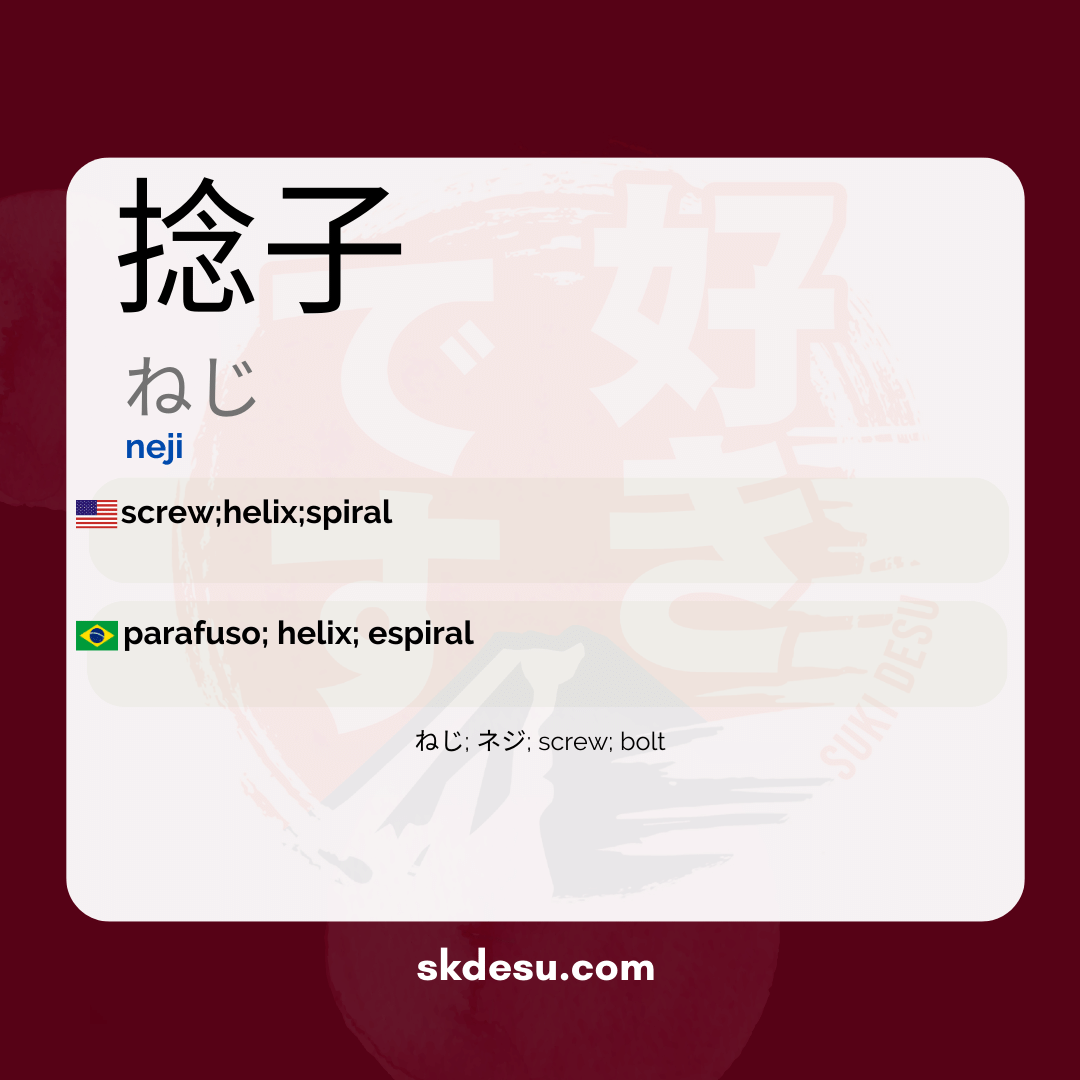Translation and Meaning of: 捻子 - neji
The Japanese word 捻子 (ねじ) may seem simple at first glance, but it carries interesting nuances for those learning the language or interested in Japanese culture. In this article, we will explore its meaning, origin, and everyday uses, as well as curiosities that can aid in memorization. If you have ever wondered how this word is applied in different contexts or what its relationship is with everyday objects, keep reading to find out.
In addition to being a useful term for practical situations, 捻子 also reveals aspects of the Japanese language that go beyond literal translation. We will cover everything from its writing in kanji to examples of how it appears in real conversations. Whether to enrich your vocabulary or better understand the structure of Japanese, this guide will provide valuable information.
Meaning and use of 捻子 (ねじ)
捻子 (ねじ) is commonly translated as "screw," referring to the metal object used to fasten parts. However, its use in Japanese goes a bit further. The word may appear in mechanical, construction contexts, and even in everyday expressions, such as ねじを回す (turning the screw), indicating physical or metaphorical adjustments.
In machines, tools, and household appliances, ねじ is a common word. Its kanji, 捻, carries the idea of "twisting" or "turning", which makes sense considering the object's function. Interestingly, although it is a technical term, many Japanese people use ねじ without thinking much about its kanji writing, as the hiragana form is widely accepted in everyday life.
Origin and writing of 捻子
The etymology of 捻子 traces back to the verb 捻る (ねじる), which means "to twist". The kanji 捻, combined with 子 (which here functions as a suffix), reinforces the idea of an object that involves rotational movement. This construction is not random—it reflects the practical function of a screw, which depends on twisting to fulfill its purpose.
It is worth noting that, although the kanji 捻子 is correct, many Japanese people choose to write the word only in hiragana (ねじ) in informal situations. This happens because the kanjis involved are not the simplest, and the reading is already sufficiently clear without them. For Japanese students, however, recognizing the kanji form can be useful in technical manuals or formal texts.
Tips for memorization and curiosities
An effective way to remember 捻子 is to associate it with the sound a screw makes when being tightened—something like "neji-neji." This mental onomatopoeia can help reinforce the pronunciation. Additionally, thinking of the verb ねじる (to twist) as the root of the word creates a logical connection between action and object.
In Japan, screws have specific standards, and the word ねじ is essential in hardware stores or workshops. An interesting fact is that, unlike in some Western countries, the metric system is predominant in these contexts. Knowing this term can be very useful for those intending to work in mechanics or DIY (do it yourself) in Japan.
Vocabulary
Expand your vocabulary with related words:
Synonyms and similar words
- ねじ (neji) - Screw, used to join parts or structures.
- ネジ (neji) - パラフソ (katakana form), used in more technical or specific contexts.
- screw - Screw.
- bolt - Bolt with nut, used to secure objects in a more robust manner.
Related words
Romaji: neji
Kana: ねじ
Type: noun
L: jlpt-n2, jlpt-n1
Translation / Meaning: screw; helix; spiral
Meaning in English: screw;helix;spiral
Definition: A tool to distort things.
Quick Access
- Vocabulary
- Writing
- Sentences
How to Write in Japanese - (捻子) neji
See below a step-by-step guide on how to write the word by hand in Japanese. (捻子) neji:
Example Sentences - (捻子) neji
See below some example sentences:
Nenhum resultado encontrado.
Other Words of this Type: noun
See other words from our dictionary that are also: noun

